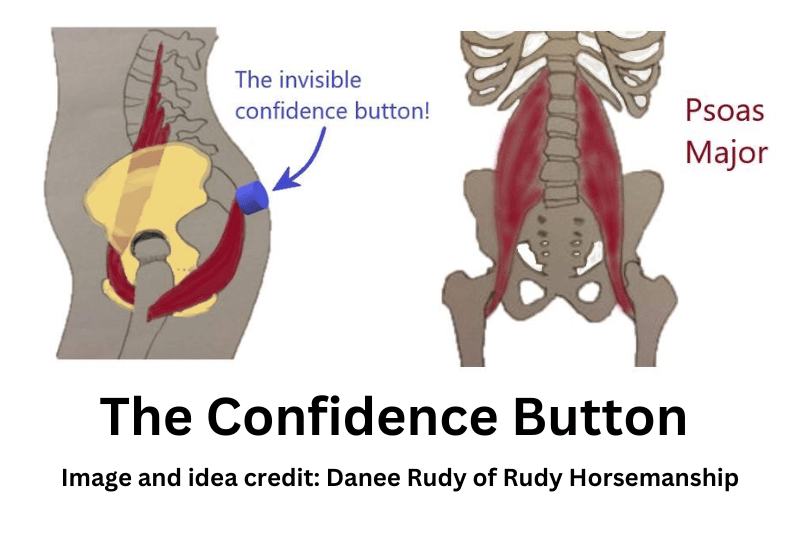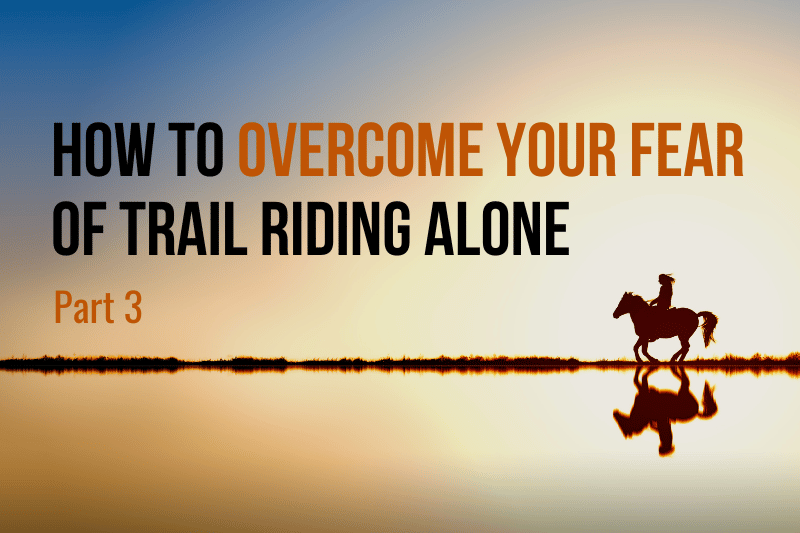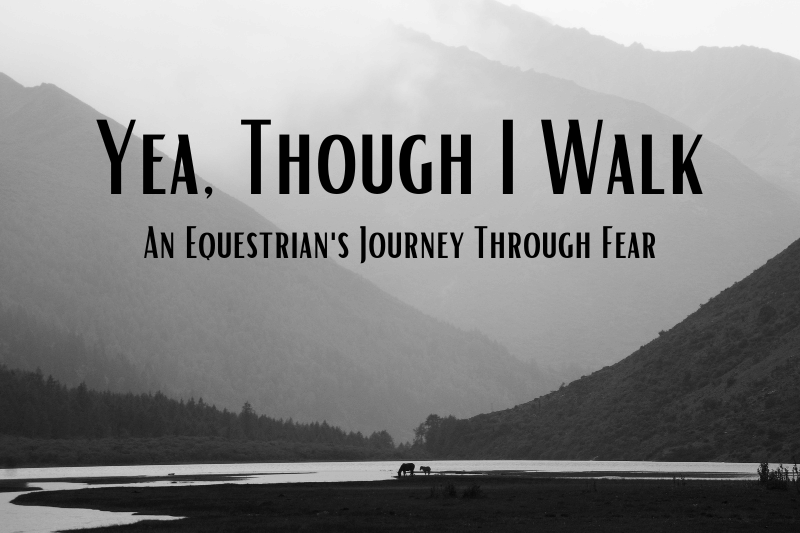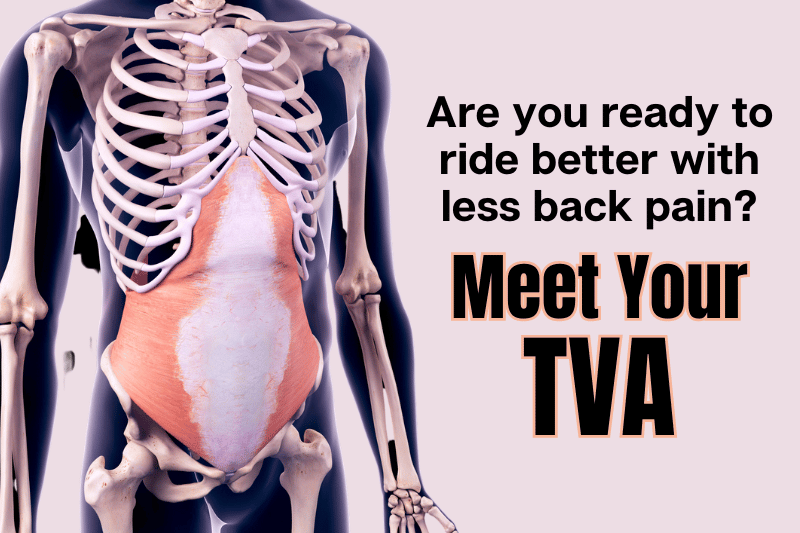Welcome back to Overcoming Your Fear of Trail Riding Alone. We’re exploring the answer to a reader question from an aspiring endurance rider. Sara asked:
Can you talk more about getting over fear? I want to try endurance riding but I work weekends, so I’d have to do most of my training rides by myself during the week. The problem is that I’m terrified of trail riding alone!
In Part 1 of this series, you placed your specific fear on a chart that helped you pinpoint whether your solution will primarily require a practical focus or a psychological focus. Part 2 explored practical solutions for addressing fear of riding alone.
This post explores how to leverage the mind-body connection to manage riding-related fear, even when it is disproportionate to actual risk.
Mind-Body Solutions for Fear of Trail Riding Alone
The mind-body connection sounds woo-woo, but science assures us that it’s real. From our guts to our hip flexors, our bodies are inextricably connected to our brains. This is good news, because it means we can learn to manage our fear response by using our bodies and brains to calm each other.
Here’s how:
Curate Your Thoughts
Our brains can react to imagination as if it were reality. Obviously, this is a very bad thing if we dwell on our fears. There’s nothing more sickening than lying awake the night before a ride, picturing yourself tumbling over a cliff with your beloved mount.
Why not leverage your imagination to your advantage instead?
Athletes have long used visualization to calm performance anxiety and hone their skills even when they’re sidelined with an injury. A paper from International Coach Academy puts it this way:
“If you exercise an idea over and over, your brain will begin to respond as though the idea was a real object in the world…and thus any idea, if contemplated long enough, will take on a semblance of reality. Your belief becomes neurologically real and your brain will respond accordingly.”
Try holding an “if this, then that” planning session with yourself. Imagine the thing you fear happening, then (here’s the key) visualize yourself handling it safely and effectively. Running this positive visualization repeatedly will not only ease your anxiety in the moment, but it’ll prime you to respond effectively if the scary event actually does occur.
Help from a therapist may be needed to go beyond what you’re able to accomplish on your own. Many riders report that Emotional Freedom Technique (EFT) and Eye Movement Desensitization and Reprocessing (EMDR) can relieve anxiety, particularly from traumatic memories. I can speak personally to the benefit of EMDR, though the issue in my case wasn’t horse-related.
Leverage Mindfulness
Mindfulness is a term that gets thrown around a lot these days – and not without reason. At its core, mindfulness is simply limiting one’s attention to the reality of this moment, observing one’s sensory experience and reactions without judgement. The last few decades have churned out reams of research on the benefits of mindfulness.
Mindfulness can be especially helpful when our fears are the result of prior bad experiences – like the fall off a bucking mare in which I broke my back. This study by Harvard’s Sara Lazar indicates that we can decrease our experience of fear by changing our focus from the bad memory to the present reality.
In Lazar’s words, “Mindfulness can enhance our ability to remember this new, less-fearful reaction, and break the anxiety habit.” The idea is to consistently interrupt those old, fear-inducing memories, eventually replacing them with new, less threatening associations in the mind.
Lazar suggests that when we begin to feel anxious, we respond by redirecting our thoughts to the present. Then, we should encourage curiosity about our inner and outer experiences as they play out.
Use Your Breath
Focusing on the breath is an age-old tenet of mindfulness. Diaphragmic breathing (generally practiced as inhaling deeply through the nose and letting the lower belly expand) can be practiced anytime, including in the saddle. You may even find that it quiets your horse in addition to your nerves.
Many riders find that singing is a more natural way to encourage deep breathing while trotting down the trail. Nobody needs to know whether you can carry a tune. (You’re riding alone, remember?) Just pick a song that makes you happy and serenade your horse.
Breathwork has a direct physical effect on our autonomic nervous system, ultimately exchanging hypervigilance for relaxed alertness.
Speaking of the nervous system, Vibrant Blue Oils makes a Parasympathetic Blend that you can dab behind your ear to stimulate your vagus nerve for a gentle, relaxing effect. I find that it actually works! My readers can try it it for just $15, which is 60% off.
Press the Confidence Button
Months ago, I stumbled across a social media post by Danee Rudy of Rudy Horsemanship.
In her post, Rudy explains how fear makes us involuntarily contract our psoas major, which connects the spine to the femur. This is why we go into the fetal position, unable to sit up straight in the saddle.
Because muscle groups work in opposition to each other (think of your biceps contracting while your triceps extend, or your hamstrings contracting while your quadriceps extend), the way to relax your psoas major is to tighten the gluteal muscles that oppose it. Rudy calls this “engaging the confidence button.”

Rudy says, “Pretend you have a button, right at the top of your butt crack, that when you press it down into the saddle, will flood you with sticky seat super powers! Because it does! When you tuck your tailbone, lift your pubic bone, and engage your lower abs, it opens and relaxes your hip joints, enabling you to sit most evasions or spooks that your horse may dish out.”
This interesting article on the fascial connection between the psoas and diaphragm not only supports Rudy’s theory, but leads us back to the utility of breathwork for riding with confidence.
Accept the Risk-Reward Exchange
Part of overcoming fear is accepting the risk-reward exchange.
Riding will always come with risk, and riding alone can raise the penalty when something goes wrong.
However, riding also comes with great rewards. My experience is that riding alone heightens these as well. There’s nothing like an afternoon alone in nature with your horse to bond your relationship and wipe away the stresses of daily life.
I am reminded of a favorite poem by Erin Hanson:
There is freedom waiting for you, On the breezes of the sky, And you ask "What if I fall?" Oh, but my darling, What if you fly?
Did you catch the other posts in this series? Check out:
How to Overcome Fear of Trail Riding Alone – Part 1
How to Overcome Fear of Trail Riding Alone – Part 2
Next week’s post will cover safety gear and communication devices every trail rider should consider.
Afraid you’ll miss it? Subscribe to my newsletter and get a heads-up on new posts.
You might also like
This post includes affiliate links, and I may earn a small commission (at no extra cost to you) when you purchase through these links. I only recommend products and services I think are helpful and useful. Thanks for helping me offset the cost of maintaining this blog as a free resource!




